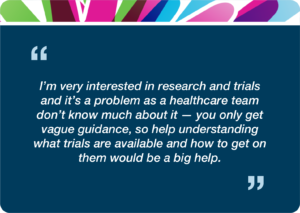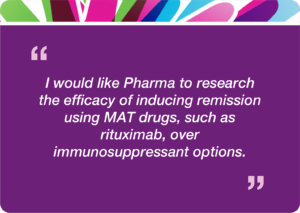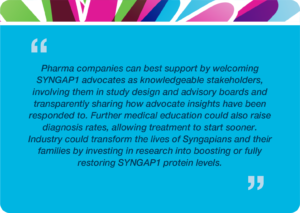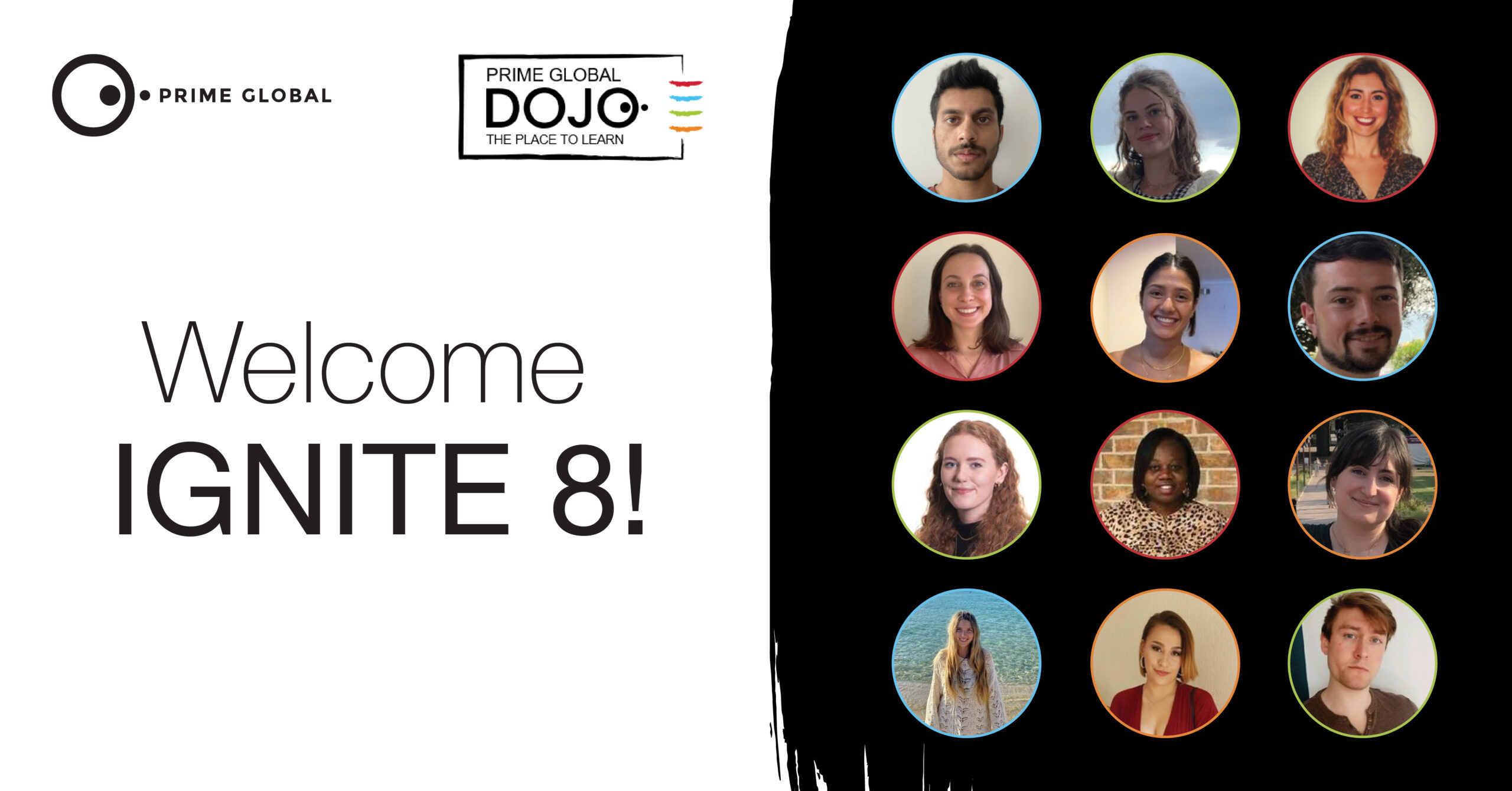Medical publishing is evolving beyond plain language summaries to provide insightful, patient-centred resources to change the course of pharmaceutical research for the better. For patients with rare diseases especially, this could be just what the doctor ordered, writes Olivia Kersey, Patient Engagement Strategist with Prime Patient.
Patient engagement in medical publications has historically been (and continues to be) minimal, generally limited to the development of plain language summaries (PLSs) or the occasional inclusion of patients as authors. Although it is encouraging to see recent improvements in this field, such as the release of PLS development guidelines and acceptance of patient authorship by the BMJ, (1) (2) the welcoming of patient involvement and increasing accessibility has been sluggish and limited.
The main purpose of the PLS format – to better connect patients with science – limits patient-pharma engagement to a passive, one-way dynamic of information provision alone, while ultimately, engagement is most fruitful when conducted as a two-way collaboration, as this allows both parties to learn from the other. Although pharma companies attempt to fill this gap by seeking information from patient communities through other project types, as highlighted by Jeremy Edwards, CEO of rare disease community hub Raremark, standard approaches of data collection seen in pharma tend to be solely in line with a company’s predetermined aims and therefore not conducive to the free, two-way dialogue needed for pharma to fully understand patients’ experiences (5); thus, innovative models of gathering information are necessary for pharma to avoid missing vital opportunities for patient support.
The Patient Voice Publication: a new model with greater returns


Considering where the PLS could be innovated to enhance both medical publishing and the amplification of patient knowledge for better product/service delivery, Prime Patient devised a new mode of lay-friendly communication that would benefit both pharmaceutical companies and patients – the Patient Voice Publication.
Building on what makes an effective PLS – understandability, patient-focused content, and accuracy – PVPs were designed to serve as a connecting tool between patients and industry, with patients sharing rich insights into their experiences and aspirations, as well as the unmet needs faced by each patient community. Thus, the creation of the PVP format provided a blueprint for demonstrable sources of real patient perspectives to be developed and used to guide pharmaceutical company planning for both medical research and patient engagement. In future, Prime Patient hope that this patient-led collaborative model will increase patient activation and the added value brought by this method of amplifying the patient voice will further encourage journal editors to accept patient authorship into the mainstream.
Rare disease communities are uniquely positioned to benefit from PVPs
For people living with rare diseases, the opportunity to have their voices heard in this way is particularly pertinent given the unique challenges rare disease communities face when it comes to being heard by pharma, such as:
- Low numbers of patients available to participate in engagement initiatives and the consequent heightened risk of conflict of interest for those who do participate (6)
-
- This is exacerbated by the relatively high proportion of paediatric patients within rare disease populations (7)
- Furthermore, because of the small population sizes, rare disease communities are often grouped together in engagement initiatives for practical purposes, which can lead to the overshadowing of a given patient population’s distinct, unique needs (6)
-
- Delayed or incorrect diagnosis, (7) reducing the already tiny patient pool from which partnerships/collaborations may be sought and thus impeding research and engagement. Diagnosis barriers, which can include inadequate awareness from healthcare professionals or a lack of appropriate testing, (7) have been greatly exacerbated by the COVID-19 pandemic (8)
- Loss of capacity to engage: the long wait for a correct diagnosis (5-7 years on average) can coincide with a deterioration of neurological/cognitive function (nearly half of all rare diseases are neurological), and therefore patients who could have participated in engagement programmes early in their disease journey could lose their ability to do so by the time diagnosis is confirmed (7)
Given these engagement challenges, when it came to public launch of the PVP format, it was fitting for the debut to take place at RAREsummit21 in partnership with seven rare disease patient advocacy groups (PAGs) and one individual patient representative. This trailblazing collaboration amplified patient voices to a degree rarely seen in pharma, elevating disease awareness to an exceptional level – benefits that were all the more highlighted given the rare disease demographic of the patients and PAGs involved.
 Indeed, rare disease communities stand to gain particularly strong benefits from not just engagement in general, but also the PVP model of collaboration in particular. For example, relatively little is known about patients’ experiences of living with each rare condition, and thus building a holistic understanding of patients’ experiences (as is inherent to the PVP scope) is all the more important if pharma companies hope to provide truly helpful products and services. (9) Undeniably, patients and caregivers are the best source of this information, given they are not only naturally knowledgeable due to lived experience but also often pushed into self-education due to inadequate professional support, consequently developing unique, nuanced expertise on their conditions that is frequently unmatched by other stakeholders. (9)
Indeed, rare disease communities stand to gain particularly strong benefits from not just engagement in general, but also the PVP model of collaboration in particular. For example, relatively little is known about patients’ experiences of living with each rare condition, and thus building a holistic understanding of patients’ experiences (as is inherent to the PVP scope) is all the more important if pharma companies hope to provide truly helpful products and services. (9) Undeniably, patients and caregivers are the best source of this information, given they are not only naturally knowledgeable due to lived experience but also often pushed into self-education due to inadequate professional support, consequently developing unique, nuanced expertise on their conditions that is frequently unmatched by other stakeholders. (9)
 While PAGs contribute great efforts into filling the knowledge gaps of medical and pharmaceutical professionals, it’s unsurprising that so little is known about each of the approximately 7000 rare diseases, given that these groups are by nature small and therefore easily overshadowed. What’s more, only half of rare diseases are associated with a corresponding PAG. (10) This struggle to gather, communicate, and then industrially utilise knowledge has a heavy impact on the day-to-day lives of people living with rare conditions; even in 2022, there is no approved treatment for approximately 95% of rare diseases, pointing to the slow pace of progress within this complex therapy area. (10) Evidently, drug developers need all the help they can get from patient groups keen to share their experiences and community connections if they hope to catch up to this severe unmet need – but how does a pharma company translate a PVP into a business strategy?
While PAGs contribute great efforts into filling the knowledge gaps of medical and pharmaceutical professionals, it’s unsurprising that so little is known about each of the approximately 7000 rare diseases, given that these groups are by nature small and therefore easily overshadowed. What’s more, only half of rare diseases are associated with a corresponding PAG. (10) This struggle to gather, communicate, and then industrially utilise knowledge has a heavy impact on the day-to-day lives of people living with rare conditions; even in 2022, there is no approved treatment for approximately 95% of rare diseases, pointing to the slow pace of progress within this complex therapy area. (10) Evidently, drug developers need all the help they can get from patient groups keen to share their experiences and community connections if they hope to catch up to this severe unmet need – but how does a pharma company translate a PVP into a business strategy?
Making the most out of patient insights

Chris Thurston, ALS patient
The value of a PVP for a pharmaceutical company transcends a mere pat on the back for including patients. From enhancing medical education to easing trial recruitment, the prospects presented by consolidating rich patient insights are plentiful – but this must be done with a view to optimisation and practical application as to not waste the degree of opportunity presented. Thus, when collecting insights from patients, it is imperative that a plan is put in place to maximise returns. This must start with a preliminary roadmap of how to implement the findings into pharmaceutical practice, ideally with the guidance of specialist patient engagement practitioners.

Trina Harris, PEM Friends
Following the collation of ideas, the logical next step is to host an advisory board of patients, caregivers and healthcare professionals (with the PVP and roadmap draft serving as pre-reading material) to discuss and refine these plans. Not only does this serve to validate and/or potentially improve pharma companies’ responses to patient perspectives, but it also embeds a clearly non-tokenistic approach to engaging with patients and assures those who contributed to the PVP that their voices are being meaningfully heard.

Jess Duggan, SynGAP Research Fund
Pharmaceutical companies also stand to gain tangible business benefits from PVP-informed engagement strategy. With PVP insights and advisory committee feedback embedded into strategic planning and the guidance of patient engagement specialists throughout, pharma companies can improve relationships with patients and better trust that their patient engagement programmes will not only make a real, positive impact on patients, but also deliver a secure return on investment/engagement in the form of saved costs, improved reputations, faster-approved products, and more. For companies who embrace this new era of collaboration, the future is bright.
Testimonies from our Patient Participants



For more information on the organisations mentioned, please visit:
For more information on Patient Voice Publications, check out the RAREsummit21 presentation from the Prime Patient team via this link, check out our relevant webpages, or get in touch via PatientEngagement@primeglobalpeople.com.
Suggested blog post: What’s next for plain language summaries?
Bibliography:
- Rosenberg A, Baróniková S, Feighery L, Gattrell W, Olsen R, Watson A et al. Open Pharma recommendations for plain language summaries of peer-reviewed medical journal publications. Current Medical Research and Opinion. 2021;37(11):2015-2016.
- Hess E, Hollander J, Schaffer J, Kline J, Torres C, Diercks D et al. Shared decision making in patients with low risk chest pain: prospective randomized pragmatic trial. BMJ. 2016;:i6165.
- FitzGibbon H, King K, Magee R, Piano C, Wilk C, Gaskarth M. Where are biomedical research plain-language summaries (PLS)?. Presentation presented at; 2019; ISMPP European Meeting.
- Blyth J, Gaskarth M, Plant A, Woods K. We Need to Talk about PLS…Exploring the Opportunities of Plain-Language Summaries | the Map [Internet]. Ismpp-newsletter.com. 2019 [cited 24 February 2022]. Available from: https://ismpp-newsletter.com/2019/05/01/we-need-to-talk-about-plsexploring-the-opportunities-of-plain-language-summaries/
- Underwood G. Why relationships are key in rare disease patient engagement [Internet]. Pharmaphorum.com. 2021 [cited 24 February 2022]. Available from: https://pharmaphorum.com/views-and-analysis/why-relationships-are-key-in-rare-disease-patient-engagement/
- Finnegan G. The challenges of engaging patients with rare diseases [Internet]. Patient Focused Medicines Development. 2021 [cited 24 February 2022]. Available from: https://patientfocusedmedicine.org/the-challenges-of-engaging-patients-with-rare-diseases/
- Spinner J. Global Genes kicks off rare-disease patient engagement effort [Internet]. outsourcing-pharma.com. 2021 [cited 24 February 2022]. Available from: https://www.outsourcing-pharma.com/Article/2021/09/13/Global-Genes-kicks-off-rare-disease-patient-engagement-effort
- Finnegan G. Pandemic causing delayed diagnosis of rare diseases [Internet]. Patient Focused Medicines Development. 2020 [cited 24 February 2022]. Available from: https://patientfocusedmedicine.org/pandemic-causing-delayed-diagnosis-of-rare-diseases/
- Smith J, Damm K, Hover G, Chien J. Lessons from an Experiential Approach to Patient Community Engagement in Rare Disease. Clinical Therapeutics. 2021;43(2):421-429.
- Stein S, Bogard E, Boice N, Fernandez V, Field T, Gilstrap A et al. Principles for interactions with biopharmaceutical companies: the development of guidelines for patient advocacy organizations in the field of rare diseases. Orphanet Journal of Rare Diseases. 2018;13(1).




